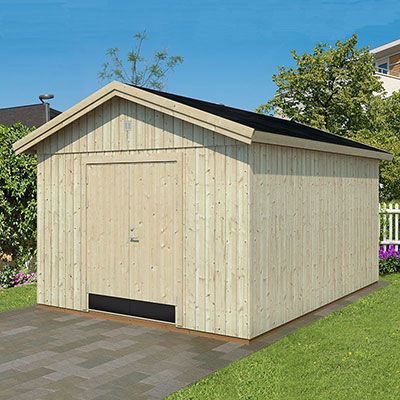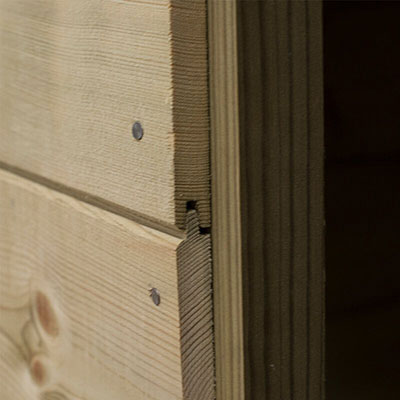
Let us set the scene. Picture this: you are thinking about giving your garden a bit of a makeover, and what better way to start than with your shed? But here is the thing, it is not just about picking any old shed. Here, we are diving into the world of cladding, where tongue and groove is the star of the show. This guide is going to answer, “what is tongue and groove” and walk you through tongue and groove shed cladding as an enhancement. From its sleek looks to its superhero-level protection against the great British weather, it’s a brilliant option for any shed cladding project. Let us get started and find out why your garden shed deserves this cladding upgrade.
Editor’s Note [18.12.23]:
Originally published in February 2020 our guide to understanding tongue and groove cladding for sheds has been given a major update today. Entirely new sections include shed basics (the need for cladding), why is tongue and groove a step up from regular cladding? a benefits table for tongue & groove vs shiplap vs overlap and a conclusion section. There have also been enhancements added across various areas of the original text.
Shed Basics - the Need for Cladding
Alright, let us chat about shed cladding. Think of cladding as your shed's superhero outfit. It is not just there to look good; it plays a big part in protecting your shed from the elements, like rain, wind, and adverse British weather. It is kind of like the first line of defence, keeping your shed sturdy and looking sharp. Plus, a well-clad shed is a style statement for your garden – it is all about blending functionality with a bit of flair.
What is Tongue and Groove Cladding?
Tongue and groove, often abbreviated to ‘T&G’, is a method of joining 2 or more separate flat objects together to form a single flat surface. These objects are usually made from wood.
Each piece has a slot cut along one edge. This is referred to as the ‘groove’. Along the opposite edge is a thin, deep ridge, which forms the ‘tongue’. The size of the ridge is slightly smaller than the depth of the slot.
Therefore, the tongue of one of the pieces fits snugly into the groove of the adjacent piece, joining them together to form a single wooden surface with a very tight seal.
Tongue and groove joinery is often used to build high-quality decking, flooring, and garden buildings.
Why is Tongue and Groove a Step Up from Regular Cladding?
Tongue and groove cladding for sheds is like the VIP upgrade in the world of shed cladding. First off, the way the panels lock together makes your shed super sturdy – think less wobble, more stability. When dealing with the British weather, this stuff is perfect; it is like a raincoat that is both stylish and waterproof. Plus, it gives your shed a sleek, seamless look that is just a cut above the usual.
Tongue and Groove Cladding in Practice
When you’re browsing through our range of sheds, summer houses and log cabins, you will often notice that floors, roofs, and walls are described as having ‘tongue and groove cladding’.
This simply means that the wooden boards used to build the products have been joined together using the method mentioned above.
This is a big selling point and one you should embrace when choosing your new garden building.
The reason for this is that the secure interlocking tongue and groove joint ensures a more robust structure, doesn't have a gap so avoids water ingress or draughts, and is therefore better insulated.
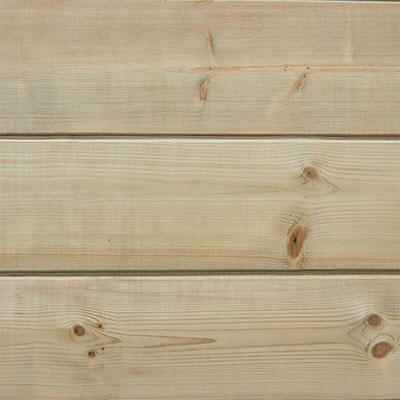

Tongue and groove construction also allows for shrinkage during warm weather, ensuring that no gaps appear between the tongue and groove boards, providing a long-lasting attractive appearance.
When it comes to flooring, opting for tongue and groove flooring is far more robust than OSB sheeting so will withstand years of footfall and storage of heavier items far better.
Again, a tongue and groove roof offers greater strength and durability than OSB sheeting.
Fencing can also be tongue and groove, for a smoother, sleeker appearance as well as a robust fence panel.
Differences Between Tongue and Groove Cladding for Sheds and Other Types of Cladding
So, what is the difference between tongue and groove cladding and other types? Read below to learn more.
Shiplap Cladding
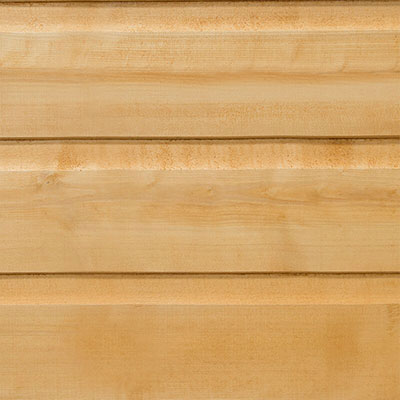

Shiplap cladding is actually a type of tongue and groove cladding, so you will sometimes see shiplap tongue and groove cladding for sale. It is designed with a slight channel running along each board, facilitating swift rainwater run-off and therefore, some say, more weatherproof than standard tongue and groove.
That said, it is very similar to the standard tongue and groove and has the same sleek appearance often preferred for modern garden design.
Whether you select shiplap or tongue and groove cladding, you can rest assured that you’re getting a very high-quality garden building indeed.
Overlap Cladding
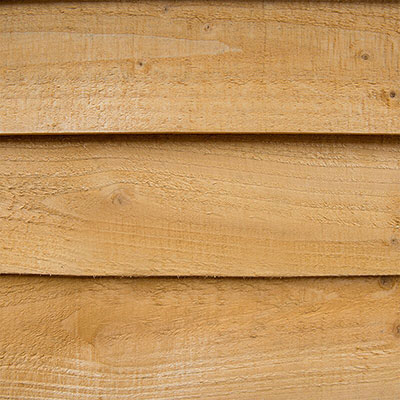

Overlap cladding is the easiest to construct, which makes it the cheapest option to buy.
The timber boards are nailed together, as the name suggests, in an overlapping fashion.
Apart from its price tag, overlap cladding’s main benefit is that it facilitates excellent rainwater run-off.
Although not as advanced as shiplap or tongue and groove, our overlap sheds are still strong, and attractive and carry long guarantees, so you can certainly buy one with confidence.
Other Differences Between T&G, Shiplap and Overlap Garden Buildings
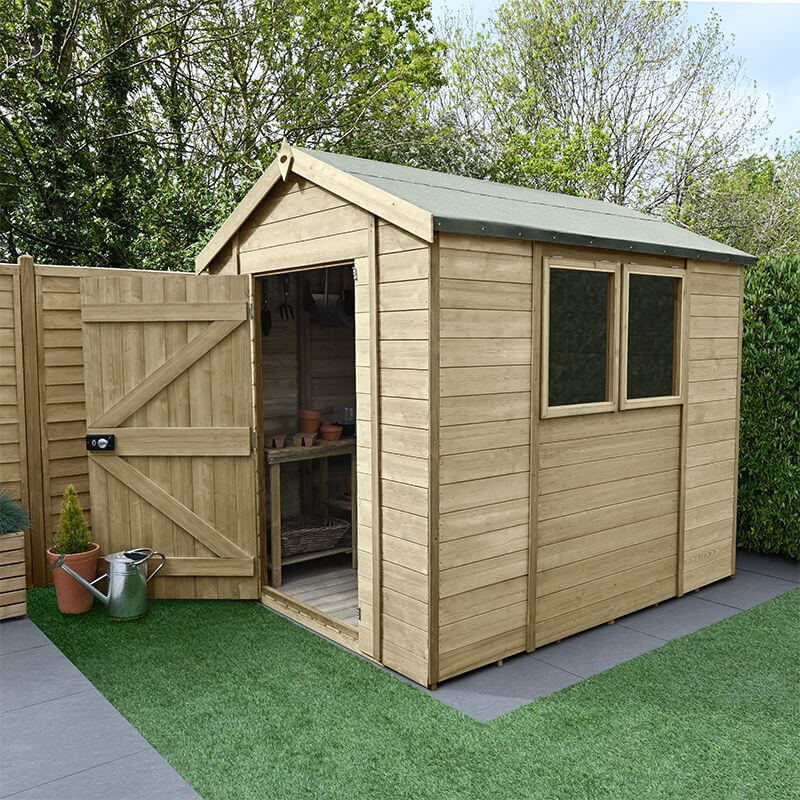

Joinery aside, tongue and groove and shiplap garden buildings tend to be built from thicker pieces of wood than overlap-clad models.
They are more frequently pressure treated options too.
Accordingly, they are usually stronger, more durable, and less likely to require periodic treatment.
The 8' x 6' Forest Timberdale Tongue & Groove Pressure Treated Apex Shed is a prime example of this type of premium shed.
Benefits
Tongue and groove shed cladding is the real “MVP” in the shed world, offering top-notch durability and style, while shiplap and overlap are more like the solid but less flashy sidekicks.
Tongue and Groove Cladding for Sheds vs Shiplap vs Overlap
Here is the lowdown in a snazzy table – comparing tongue and groove shed cladding, shiplap, and overlap cladding across 20 key features. Let us see who wins the cladding battle, this will also help with understanding tongue and groove a little more:
|
Feature |
T&G |
Shiplap |
Overlap |
|
Strength |
Solid as a rock |
Pretty strong |
Decent |
|
Weatherproofing |
Entirely rain-proof |
Handles well |
Does the job |
|
Easy to install |
Bit of a challenge |
Easier |
Very easy |
|
Appearance |
Super sleek |
Tidy |
Rustic vibe |
|
Durability |
Lasts for decades |
Long-lasting |
Fairly durable |
|
Price |
More expensive |
Middle ground |
Wallet-friendly |
|
Upkeep |
Low maintenance |
Needs some TLC |
Regular attention |
|
Drainage |
Top-notch |
Good run-off |
Not bad |
|
Insulation |
Cosy and warm |
Keeps chill out |
Basic |
|
Eco-friendly |
Green choices |
Usually, eco |
Depends on model |
|
Weight |
Hefty |
Not as heavy |
Lightweight |
|
Thickness |
Thick panels |
Medium build |
On the thinner side |
|
Flexibility |
Stays put |
Some give |
More “bendy” |
|
Easy to fix |
Needs effort |
Simpler to fix |
Easy repair |
|
Style choices |
Limited but classy |
More options |
Highly customisable |
|
Fit precision |
Snug as a bug |
Neat fit |
A bit loose |
|
Security |
Fort Knox level! |
Secure enough |
Good protection |
|
Soundproofing |
Quiet zone |
Muffles sounds |
Not much |
|
Resale value |
Adds major value |
Increases value |
Little boost |
|
Availability |
Easy to find |
Everywhere |
Super common |
There you have it, the full breakdown of what each cladding type brings to the table. Each has its own strengths, but tongue and groove shed cladding clearly leads the pack in most areas.
Tongue and Groove Sheds for Sale at Buy Sheds Direct
Buy Sheds Direct is the home of the Great British garden shed, so, as you’d expect, we stock a superb range of tongue and groove sheds. This premium range include small sheds, right up to large sheds. These are manufactured by top-quality manufacturers, Forest Garden and Palmako.
While you’re here, why not take a look at our summer houses, garden offices and log cabins too?
You’ll find plenty of tongue and groove options available, allowing you to enjoy the many benefits of this marvellous type of cladding, whatever garden building you own.
Conclusion
So, we have been on a bit of a journey through the world of shed cladding. We explained “what is tongue and groove cladding” and why tongue and groove has come out on top as the go-to choice for a sturdy, stylish shed that will stand the test of time and weather. It is more than just keeping your shed looking good; it is about making a statement in your garden with a timber cladding that is both practical and snazzy.
Whether you are eyeing up a new garden office, summer house, or just a spot to stash your garden gear, tongue and groove cladding is your best bet for quality and durability. Sure, shiplap and overlap have their perks, but tongue and groove is where it is at for that solid, sleek, long-lasting finish. And hey, with options aplenty at Buy Sheds Direct, you are all set to level up your garden game with some top-notch cladding.
Contact and guidance
If you need further advice and guidance in understanding tongue and groove cladding for sheds, please do not hesitate to contact us. The team at Buy Sheds Direct await your call on all matters related to tongue and groove shed cladding and can advise about the best products in our selection to meet your needs. Contact methods include:
- Phone calls - 0333 003 0514
- E-mails – send these through our contact form
- Text chat - our live chat app enables you to text chat in real-time

